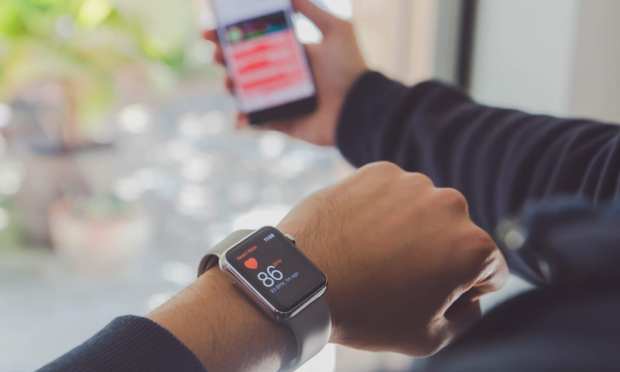Lagging Innovation Sees Slow Consumer Embrace Of Connected Health Devices

Apple is working on several health-related enhancements to the Apple Watch, including sensors to monitor body temperature and blood sugar, plus a special edition for extreme sports, but it’s tough to know if that’s enough for the tech giant to finally make some inroads with finicky HealthTech consumers.
As much as people rely on connected devices for every aspect of their health — whether that’s tracking their pace on a daily power walk, charting a personal best while swimming laps or monitoring their breathing — Apple is still struggling to make its mark.
A faster processor, a thinner display screen and improved wireless connectivity — which are expected features of the Apple Watch Series 7 — are nice enhancements, but they don’t get to the heart of what most people want from their connected devices: information — and lots of it.
Deliberate Approach To Innovation
The body temperature enhancements were considered as part of COVID-19 detection, but they didn’t come out as fast as anticipated, according to Bloomberg. That feature will now be included with the 2022 update, competing with the capabilities of smartwatches like Fitbit, which is now owned by Google.
The blood-sugar sensor is also in the works, but is not expected to be ready for immediate commercial release. The glucose monitoring feature would set the Apple Watch apart from any other offerings on the market. Apple is aiming for a solution that can analyze blood through the skin, without the need for a finger prick or users’ input of the numbers. These kinds of innovations might be what Apple needs to truly plant its flag in the healthcare space, but when will be included in the watch is anyone’s guess for now.
Until then, it seems, Apple will continue to struggle to reach the levels of world domination it has in entertainment and control systems when it comes to healthcare.
“Apple has envisioned an audacious plan for healthcare, offering its own primary-care medical service with Apple-employed doctors at its own clinics, according to people familiar with the plan and documents,” according to a Wall Street Journal piece on Wednesday (June 16).
“To test that and other bold healthcare ideas, it took over clinics that catered to its employees and built a team with scores of clinicians, engineers, product designers and others,” according to the WSJ report. “Today, those ambitions, which aren’t widely known, have largely stalled as Apple has shifted the focus of its health unit to something it knows well: selling devices, specifically the Apple Watch, according to people familiar with its strategy.”
Slim Pickings For Health Fanatics
Apple’s new primary-care service reportedly hasn’t gotten off the ground. A digital health app launched quietly this year has struggled to keep users engaged, according to people familiar with the app and the documents seen by the Journal.
Meanwhile, Timex has released a series of new smartwatches aimed more at financial well-being than physical health via its Timex Pay-powered Tappy, a secure contactless payment application. While the wearable tech may come in handy when paying for a doctor’s visit, boosting your metabolism or tracking your steps could prevent the need for that visit in the first place.
No Easy Path To Success
Healthcare’s recent embrace of more tech-driven tools has drawn in outside disrupters — the Amazons, Walmarts and OneMedicals of the world — that are looking to press further into the market and put additional pressure on legacy players to start building an environment that is easier for patients to use.
Peloton purchased Aiqudo in February, as well as Atlas Wearables and Otari late last year, according to Bloomberg. The exercise company said the acquisitions were meant to improve both talent and technology.
All three deals give Peloton the ability to possibly build new hardware and services that expand on its bikes, treadmills and software services, Bloomberg reported. The deals could also help Peloton debut its own digital voice assistant, with the engineers joining the company focused on artificial intelligence (AI) and computer vision technology.
The NBA, NASCAR, UFC and Formula One racing have all struck deals with Finnish wearable maker Oura, which offers a wedding-sized ring that can measure heart rate (a signal of an athlete’s overall health) and body temperature. Meanwhile, Facebook introduced a wearable this spring that can read a user’s mind and give them superpowers, like typing on a keyboard even when there is no keyboard there.
“You have to find areas where the incentives for the people using it, which are often the clinicians, are aligned with the people paying for it,” said Chief Strategy Officer Peter Durlach, whose company provides voice transcription services for healthcare and other markets. “And you have to sew all of this together, and then you have to build something that actually works and is actually going to do what it’s supposed to do.”
It’s too early to say whether healthcare will be Apple’s kryptonite after two decades of almost uninterrupted success, but for now, experts and industry observers have become increasingly aware of the tech behemoth’s struggles.
